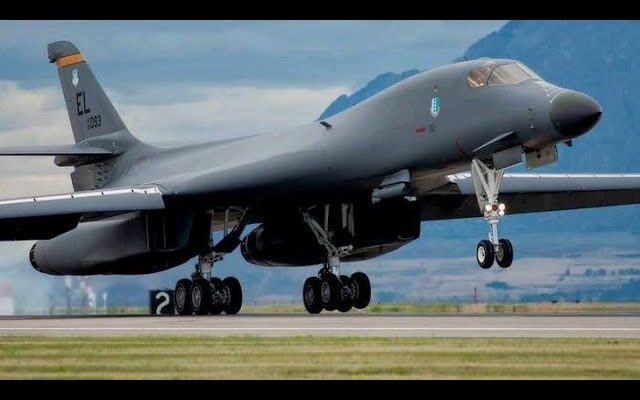Why India Doesn’t Use Bombers? | Indian Air Force | TU-160 Bombers | B-2 Spirit Bomber
The Indian Air Force (IAF) is widely regarded as one of the most capable air forces globally, boasting a diverse fleet that includes multirole fighters, advanced surveillance aircraft, and specialized transport planes. However, one notable absence from India’s arsenal is strategic bombers, which are essential for long-range precision strikes in some air forces. While countries like the United States and Russia rely heavily on bombers such as the B-2 Spirit and the Tu-160 for their strategic operations, India has made a conscious decision not to pursue or integrate bombers into its fleet. This decision is influenced by various factors, including strategic priorities, budget constraints, and India’s defense philosophy.
India’s Defense Strategy and Focus on Multirole Fighters
India’s defense strategy is primarily focused on deterrence, air superiority, and maintaining robust defensive capabilities, particularly given its regional security concerns. The IAF emphasizes the use of multirole fighter jets like the Su-30MKI, Mirage 2000, Rafale, and the indigenous Tejas fighter to perform a variety of missions, including ground attack, air superiority, and tactical bombings. These fighters, with precision strike capabilities, are seen as a more cost-effective and flexible option than bombers for India’s military requirements.
India’s doctrine is also grounded in the concept of “credible minimum deterrence” in nuclear policy, meaning it seeks to deter any potential adversary without over-investing in strategic assets. The country’s nuclear posture is reliant on a combination of land-based, sea-based, and air-based delivery systems, with the latter primarily relying on fighter aircraft, rather than long-range bombers.
Cost and Logistics of Maintaining Bombers
One of the key reasons India does not operate strategic bombers like the Tu-160 or B-2 Spirit is the prohibitive cost associated with acquiring, maintaining, and operating such systems. Bombers are expensive not only in terms of their procurement but also their ongoing maintenance, training, and operational costs. Aircraft like the Russian Tu-160 and the American B-2 Spirit are technologically advanced but come with hefty price tags, requiring large fleets to be effective. This would stretch the budget of the Indian Air Force, which prefers investing in a balanced mix of multirole fighters and other assets that offer a broader spectrum of capabilities.
Additionally, bombers require extensive support infrastructure, including airbases, refueling stations, and strategic planning frameworks, which India’s current air force structure might not be equipped to fully support. The country’s defense budget and resource allocation are more geared toward building a well-rounded air force capable of addressing immediate regional threats, rather than investing heavily in long-range strategic bombers.
Regional Security Dynamics
India’s strategic priorities are shaped by its regional security dynamics, with a focus on border defense and deterrence, especially concerning China and Pakistan. While bombers are excellent for striking deep behind enemy lines in a large-scale conflict, India’s primary security concerns are often centered around more localized, conventional threats. In such scenarios, the flexibility, speed, and cost-effectiveness of multirole fighters are preferred.
Moreover, India’s current reliance on ballistic and cruise missiles as part of its strategic deterrence reduces the need for long-range bombers. These missile systems are more cost-effective and can be launched from a variety of platforms, including submarines, ground stations, and aircraft, making them more suited to India’s defense philosophy.
Technological and Tactical Considerations
India’s air force strategy also revolves around technological advancements in other areas, such as stealth, precision-guided munitions, and long-range air-to-surface missiles, all of which are integrated into its fighter jets. The Su-30MKI, for instance, is capable of carrying a wide range of precision-guided munitions and long-range anti-ship missiles, making it an effective platform for strike missions, even without the need for dedicated bombers.
The Indian Air Force has also invested in aerial refueling capabilities, ensuring that its fighter jets can strike deep into enemy territory if necessary. This allows India to project power and conduct strategic missions without the complexity and expense of operating long-range bombers.
Conclusion: Strategic Priorities Over Bombers
India’s decision not to pursue bombers such as the Tu-160 or B-2 Spirit is a calculated one, driven by economic, strategic, and tactical considerations. The focus on multirole fighters, precision strike capabilities, and nuclear deterrence ensures that India maintains a flexible, modern, and cost-effective air force. While bombers may play a crucial role in the defense strategies of countries with global power projection capabilities, India’s regional priorities and defense philosophy make bombers unnecessary at this time. Instead, India continues to strengthen its air force with advanced fighter jets, missile systems, and strategic capabilities, ensuring it remains a formidable power in the region.



